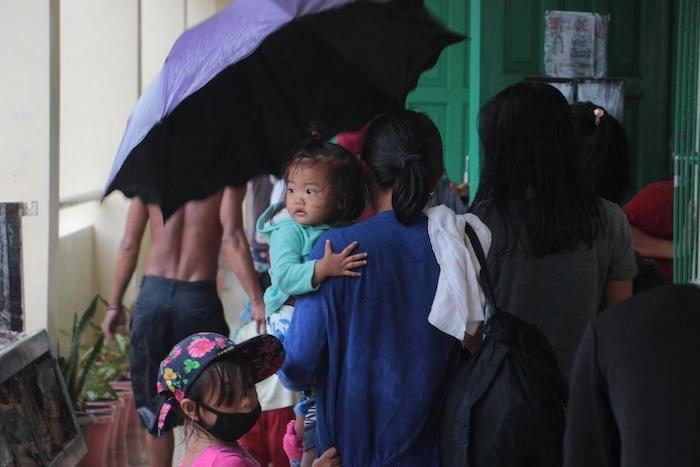A joint report by UNICEF and the Internal Displacement Monitoring Center brings into sharper focus one of the harshest impacts of climate change: child displacement. UNICEF cited the new data as further evidence that more must be done to protect children from the risks and safeguard their futures.
20,000 children displaced every day by extreme weather
A new report shows the extent to which children globally have been uprooted by extreme weather linked to climate change, often at their peril.
“Children Displaced in a Changing Climate”, a joint report by UNICEF and the Internal Displacement Monitoring Center in partnership with the Patrick J. McGovern Foundation, is a first-of-its-kind data analysis that shows 43 million children were forced to leave their homes in the past six years (2016-2022) — the equivalent of about 20,000 children every day — mainly due to floods and storms, but also droughts and wildfires.
UNICEF report includes the first data set to focus on children
Up until now, with previous data on displacement rarely distinguishing by age, these children have been statistically invisible. In places where there are other issues, like rapid urbanization, conflict and insecurity, the report notes, children on the move are even more likely to slip through the cracks.
Researchers used data modeling to quantify past displacements and to project where children are likely to be displaced next.
The report also identifies countries where a high risk of weather-related child displacement is compounded by factors such ashigh rates of poverty, conflict and other hazards — and where efforts toward risk mitigation and disaster preparedness work will be most critical.
Children and communities are especially vulnerable in countries like Haiti and Mozambique, where the risk of weather disasters is high but capacities for coping with them are limited.
The many ways children who are displaced can suffer
Displacement – whether short-lived or protracted, reactive or preemptive – can multiply climate-related risks for children and their families.
In the aftermath of a disaster, children may become separated from their parents or caregivers, amplifying risks of exploitation, child trafficking and abuse. Displacement can also disrupt access to safe water, sanitation and health care, including essential vaccines, magnifying children’s risk of disease. Schooling is often disrupted as well, jeopardizing children’s futures.
And displaced children and families don’t necessarily end up in areas that are any less vulnerable to climate shocks.
Where in the world is this happening the most?
In relative terms, Small Island Developing States and countries in the Horn of Africa are the most affected.
Dominica, Saint Maarten, Northern Mariana Islands, Saint Martin, Cuba and Vanuatu recorded the most child displacements from storms, according to the report.
South Sudan and Somalia experienced the greatest number of child displacements from floods — and both implement and record far fewer preemptive evacuations, suggesting children living in these hotspot locations are even more vulnerable.
Drought triggered more than 1.3 million internal displacements of children across 15 countries between 2016 and 2021. More than half — 730,000 — were recorded in Somalia, another 340,000 in Ethiopia and 190,000 in Afghanistan. Researchers caution that these numbers are likely to be radically underreported, due to the slow onset nature of the situation and poor reporting and monitoring mechanisms.
Over the next 30 years, they project, tens of millions more children will be displaced by river flooding than cyclone winds or storm surges. Regions at highest risk are South Asia, East Asia and the Pacific, and Latin America and the Caribbean.
Read the full report.
UNICEF’s call to climate action: protect, prepare and prioritize children
Climate change factors into everything UNICEF does for children. The urgent need for communities and countries to adapt to and mitigate climate impacts and build resilience touches virtually every UNICEF program, from water and sanitation to health, nutrition, education and protection. Climate considerations are an integral part of UNICEF’s emergency response and recovery work.
With the release of the “Children Displaced” report, UNICEF repeated its call for global community to take action to better protect children and young people, and to better prepare them to live in a climate-changed world.
To improve outcomes for children and young people at risk of future displacement, UNICEF urges governments, donors, development partners and the private sector to ensure that child-critical services — education, health, social protection, child protection — are shock-responsive, portable and inclusive. Policies and solutions must prioritize their needs. And children and young people must be given opportunities to participate in climate action.
UNICEF works with governments in regions and countries that are most at risk of climate-related displacements and other impacts to better prepare for and minimize those risks, develop and implement child-sensitive climate adaptation strategies, and design resilient and portable services to reach the most vulnerable children before, during and after disaster strikes.
UNICEF works with partners to keep children’s needs at the forefront of climate action. Support UNICEF. Donate today.
Read the full article here










